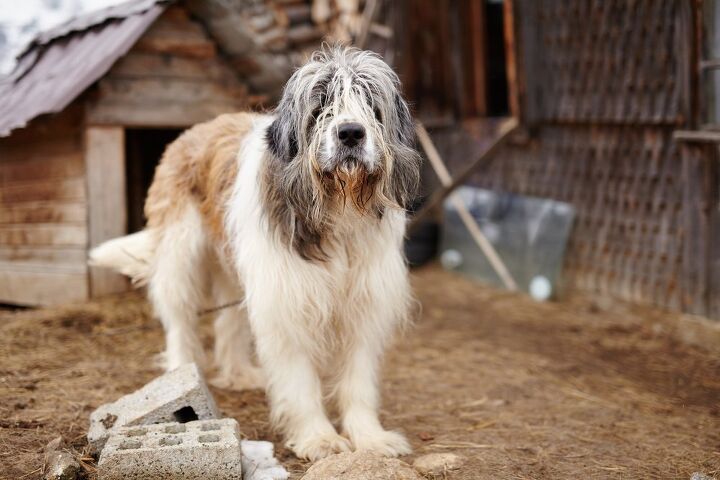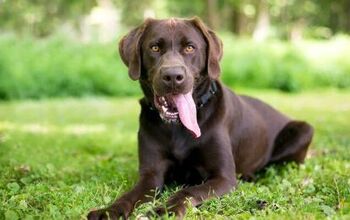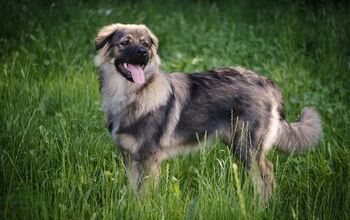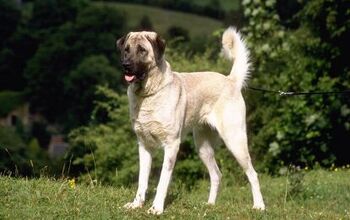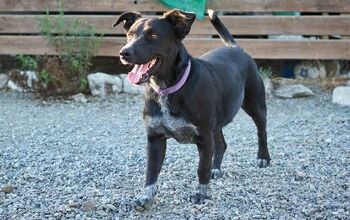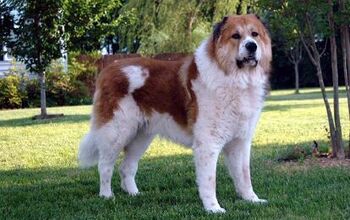Carpathian Shepherd Dog


About Carpathian Shepherd Dog
Though he may not look like other livestock guarding breeds that hail from the Carpathian Mountains, the Carpathian Shepherd Dog does have a distinct appearance. His coat is long and thick, his body lithe and muscular, and his head and face wolf-like in appearance. Though he was developed as a livestock guardian, this breed also does very well as a family companion. He even gets along well with children.
Though he was developed as a livestock guardian, the Carpathian Shepherd Dog also does well as a family companion.
Very little is known about the Carpathian Shepherd Dog’s origins except that it was developed hundreds of years before written records of dog breeding were ever kept. It is known, however, that the breed was primarily kept by poor farmers in the remote regions of Europe and that its original purpose was always to herd and protect livestock. There are several theories about the origins of the breed but the most commonly accepted is that he descended from some of the first livestock guarding breeds as much as 14,000 years ago.
Again, the exact origins of the Carpathian Shepherd Dog are unknown, but he may be related to other livestock guarding breeds such as the Molossus or the Sarplaninac.
As a large-breed dog, the Carpathian Shepherd Dog should be fed a high-quality dry food formulated for larger breeds. This dog is also a working breed, so he may do well on an active or working breed formula as long as you are careful about overfeeding to prevent obesity. Follow the feeding recommendations on the dog food package according to your dog’s weight to determine how much to feed him each day.
Because the Carpathian Shepherd Dog is a livestock guarding breed, he is meant to be a little independent by nature.
Because the Carpathian Shepherd Dog is a livestock guarding breed, he is meant to be a little independent by nature. His intelligence and his capacity to bond closely with family, however, makes him very trainable. These dogs do require a firm hand in leadership as well as plenty of socialization from a young age, especially if he is to be kept as a family pet. They are best for experienced dog owners who already understand the basics of dog training.
The Carpathian Shepherd Dog is a large-breed dog, standing between 23 and 29 inches tall and weighing up to 100 pounds at maturity. Males of the breed are a little larger than females, standing 25.5 to 29 inches tall versus 23 to 26.5 inches. Males grow 70 to 100 pounds while females usually top out around 85 pounds.
As a livestock guarding breed, the Carpathian Shepherd Dog must have a certain degree of independence in his nature. These dogs were bred to work and they certainly can, but they also enjoy spending as much time with family as they can. This breed develops strong bonds with family and some of them can be very affectionate – this is not the kind of dog you can leave at home alone all day. Carpathian Shepherd Dogs don’t have the same dominant tendencies as many livestock guarding breeds, but he still requires a firm hand in training and an authoritative figure in the family. These dogs require a great deal of socialization from a young age and they will always have protective instincts. Surprisingly, however, they tend to get along better with other dogs than many Carpathian breeds.
The Carpathian Shepherd Dog is a very healthy breed by nature with an average lifespan up to 15 years. Even so, all dogs are prone to certain health problems. The health problems most commonly seen in this breed include hip dysplasia, elbow dysplasia, bloat, eye problems, and arthritis.
The average lifespan for the Carpathian Shepherd Dog is thought to be about 12 to 15 years which is fairly long for a breed of its size.
As a livestock guarding breed, the Carpathian Shepherd Dog is used to spending most of the day on his feet. This breed is by no means hyperactive, but he does have a fair bit of energy and significant requirements for daily exercise. The Carpathian Shepherd Dog needs a long daily walk and will also appreciate having outdoor space in which to run and play.
This breed develops strong bonds with family and some of them can be very affectionate.
The Carpathian Shepherd Dog is not currently recognized by the AKC but he is recognized by the Kennel Club, the FCI and the UKC. The FCI classifies him in Group 1 as a Sheepdog and the UKC as a Herding Dog. The Kennel Club places him in the Pastoral group.
The Carpathian Shepherd Dog’s coat is one of his most defining features. As a Carpathian Mountain breed, these dogs require thick, double coats for protection against harsh weather. The Carpathian Shepherd Dog has a soft, dense undercoat and a longer, harsher outer coat. The hair on the dog’s head and the front of the legs is short and smooth while it is longer and more abundant on the rest of the body. The most common coloration for this breed is variations of gray or pale fawn with a sort of grey overlay. White markings are acceptable, and it is possible for a dog of this breed to be born solid white or black, though these dogs are not eligible for show.
The average litter size for the Carpathian Shepherd Dog is 4 to 10 puppies. Because these dogs can grow up to 100 pounds at maturity, it is important to keep them from growing too quickly as puppies – overgrowth may increase the dog’s risk for musculoskeletal issues in adulthood. Feed your puppy a large-breed puppy formula until he reaches 80% of his expected adult size and then switch to a large-breed adult formula. This breed also requires plenty of socialization and training as a puppy.
Photo credit: Flaviu L. Vlaicu/Shutterstock; alexandru marinescu/Shutterstock; Catalin Petolea/Shutterstock

Kate Barrington is the loving owner of two cats (Bagel and Munchkin) and a noisy herd of guinea pigs. Having grown up with golden retrievers, Kate has a great deal of experience with dogs but labels herself a lover of all pets. Having received a Bachelor's degree in English, Kate has combined her love for pets and her passion for writing to create her own freelance writing business, specializing in the pet niche.
More by Kate Barrington



